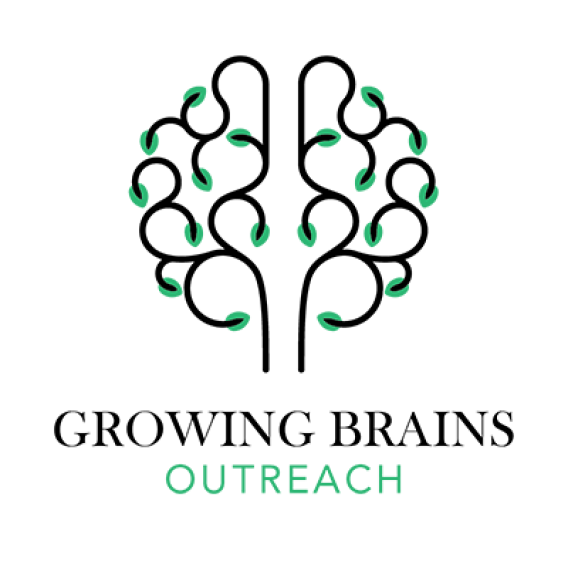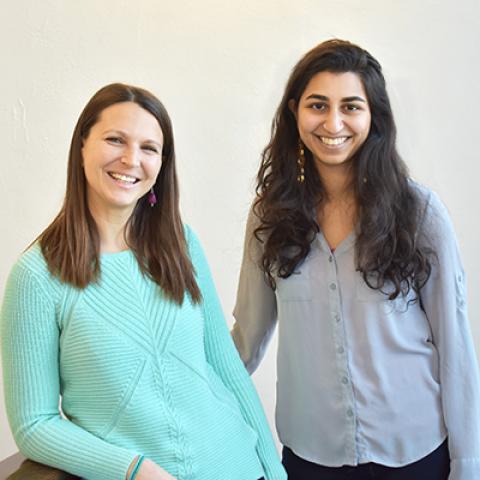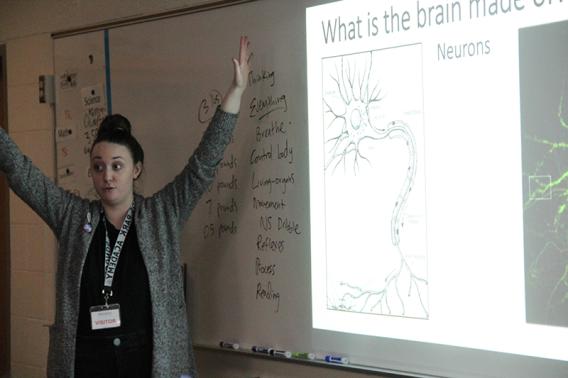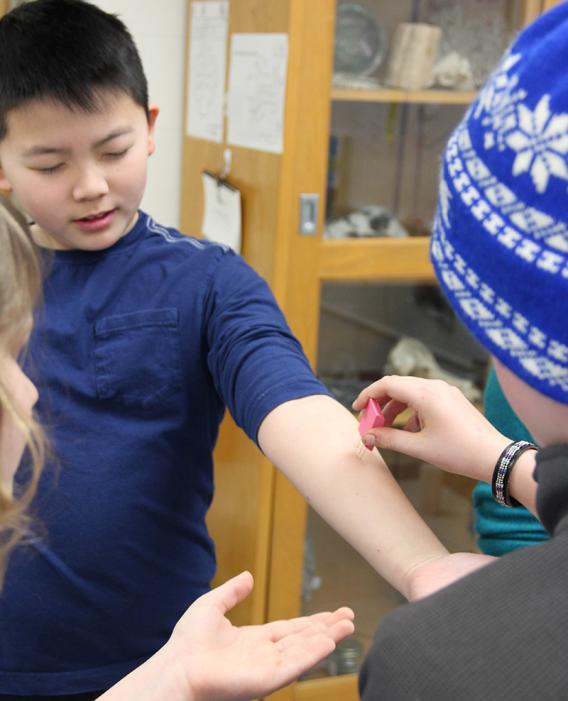Growing Brains outreach
Bringing the science of brain development to children and youth
Growing Brains is a developmental neuroscience outreach program that aims to educate young people about their brain’s development and cognition. The program is led by volunteer Institute of Child Development (ICD) graduate students and partners with schools, summer camps, after-school programs, and community groups. Through the program, we hope to inspire children and adolescents to value science and to give them a sense of agency in their own development.

We're driven to make a difference
Quote from Keira Leneman & Shreya Lakhan-Pal

Neuroplasticity is like a superpower that everyone has access to, especially children and teenagers. You can be in charge of creating the experiences that physically shape your brain for the future.
How it works
Our volunteer ICD graduate students visit classrooms or other learning communities in the Twin Cities metropolitan area to give lessons about the developing brain.
In-person lessons are generally 60 minutes, with virtual sessions lasting 30-45 minutes. Lessons typically target fourth to eighth graders; however, we're happy to adjust the structure and content of our lessons for different age ranges by request.
Generally, each lesson has two parts: a presentation and time for interactive activities.
Lesson topics
We aim to make our lessons informative—and fun! We cover basic neuroscience concepts, discuss brain development across time, and explore the power we have over our own brain development.
By the end of the lesson, students will be able to answer:
- How is the brain structured? How does it work? What does it look and feel like?
- How does the brain change across childhood? When do certain areas of the brain develop?
- How do our experiences shape our brains? What can we do to support our own brain development?
Teaching tools
We use several tools and activities to help bring scientific concepts to life, including:
- brain specimens to highlight the different areas of the brain
- a bean bag toss to show neuroplasticity in real-time
- an eraser with pins to explain how the sensory cortex is organized

Photo credit: Lauren Hernandez, Mounds Park Academy


Photo credit: Lauren Hernandez, Mounds Park Academy


Growing Brains in the media
Growing Brains was recently featured in the College of Education and Human Development's Connect magazine and on the Market Science website.
How to schedule a lesson
Interested in scheduling a lesson? We'd love to hear from you! Lessons typically target students in fourth to eighth grade, but can be adjusted for other age ranges and abilities. In-person lessons run for approximately one hour, with virtual sessions lasting 30-45 minutes. Group sizes range from about 10-60 students. To get the most out of our sessions, we recommend smaller groups of approximately 30 students. Questions? Contact us at growingbrains@umn.edu.
For new lesson requests, please allow at least 2-3 weeks of lead time, so we can appropriately plan and prepare the content of the lesson.